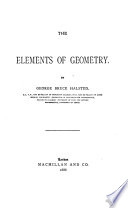 | George Bruce Halsted - Geometry - 1886 - 394 pages
...angles opposite equal sides are equal.) But £ BDA + 4 BDC = st. £, = st. . 178. COROLLARY I. If two triangles have two sides of the one respectively equal to two sides of the other, and the angles opposite to one pair of equal sides equal, then, if one of the angles opposite the other... | |
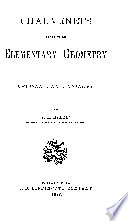 | William Chauvenet, William Elwood Byerly - Geometry - 1887 - 331 pages
...and substituting EC for its equal ED, BE + EC > BD, or BC > BD. PROPOSITION XV.—THEOREM. 31. If two triangles have two sides of the one respectively equal to two sides of the other, and the third sides unequal, the triangle which has the greater third side has the greater included... | |
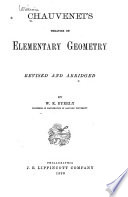 | William Chauvenet - Geometry - 1887 - 346 pages
...the triangle which has the greater included angle has the greater third side. PROPOSITION XV. If two triangles have two sides of the one respectively equal to two sides of the other, and the third sides unequal, the triangle which has the greater third side has the greater included... | |
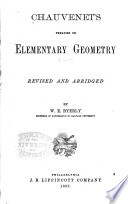 | William Chauvenet, William Elwood Byerly - Geometry - 1887 - 332 pages
...k IS EXERCISES ON BOOK IV. -f ( • ' \ [-:-" u3 THEOREMS. 1. Two" triangles are equivalent if they have two sides of the . one respectively equal to two sides of the other, and the included angle of the one equal to the supplement of the included angle of the other. 2. The... | |
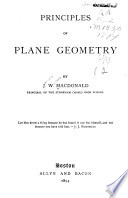 | James Wallace MacDonald - Geometry - 1894 - 76 pages
...triangle having sides equal to the sides of a given triangle. Proposition XXXI. A Theorem. 68. If two triangles have two sides of the one respectively equal to two sides of the other and the included angles unequal, the third side of the one having the greater angle will be longer... | |
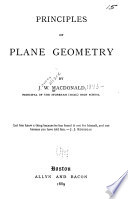 | James Wallace MacDonald - Geometry - 1889 - 80 pages
...Three different cases may arise ; prove each. Proposition XXXII. A Theorem. 69. Conversely, if two triangles have two sides of the one respectively equal to two sides of the other and the included angles unequal, the angle opposite the longer third side will be greater than the... | |
 | Robert Baldwin Hayward - Geometry, Solid - 1890 - 160 pages
...Hence prove VIII. 4 directly without the aid of the polar triangles. X. — Ambiguous Cases. 1 . If two triangles have two sides of the one respectively equal to two sides of the other and the angles opposite to one pair of equal sides equal, then the angles opposite to the other pair... | |
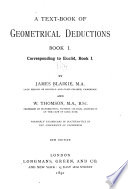 | James Andrew Blaikie, William Thomson - Geometry - 1891 - 160 pages
...I. 38 to show AABD = AACD, AGBD = AGCD; ... AGAB = AGCA; .'. their halves are equal, etc. 7. If two triangles have two sides of the one respectively equal to two sides of the other and the contained angles supplementary, the triangles shall be equal in area. Place the triangles so... | |
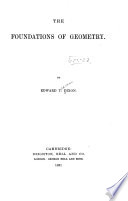 | Edward Travers Dixon - Geometry - 1891 - 180 pages
...equal to them of the other triangle. Hence the triangles are congruent. [I. 10. PROPOSITION XV. If two triangles have two sides of the one respectively equal to two sides of the other, and an angle of the one triangle opposite one of those sides equal to that opposite the equal side... | |
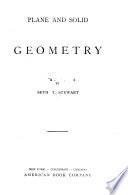 | Seth Thayer Stewart - Geometry, Modern - 1891 - 428 pages
...opposite these sides in the other, are equal in all their parts. (Same.) Corollary IV. Two triangles, with two sides of the one respectively equal to two sides of the other, the two angles opposite these sides, in each triangle, being both acute, or one acute and the other obtuse,... | |
| |